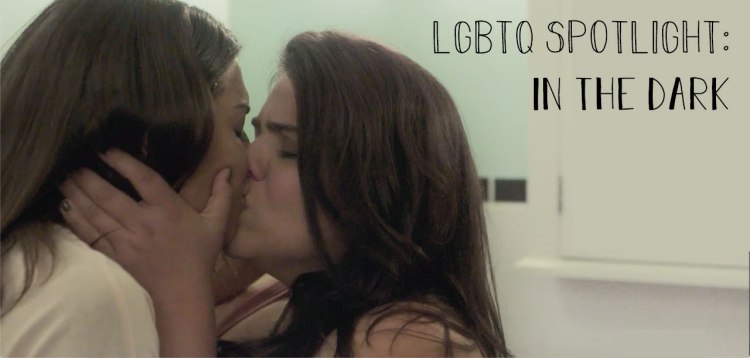With a few episodes of The CW show out, we have a new lesbian character on our hands. Let’s review how the show is performing with LGBTQ representation so far.
What is In the Dark?
In the Dark is a dramedy about a sarcastic pessimist who tries to solve the mystery of her missing friend. Our protagonist, Murphy, also happens to be blind and accompanied by the fan favorite guide dog, Pretzel. Murphy’s co-worker, close friend, and roommate is Jess, a certified lesbian. In the Dark is now airing its first season on The CW Thursday nights at 9pm.
Can we trust The CW?
As you may well be aware, The CW doesn’t have the greatest record when it comes to lesbian characters, making many LGBTQ viewers—myself included—a little apprehensive. Need we look further than The 100’s Lexa or Supergirl’s Maggie Sawyer? The CW’s promotion for sapphic women in their shows can be a little on the heavy side. This had been true for the The 100 and Supergirl back when they had wlw ships on the shows, both leading to underdeveloped and dishonorable character write-offs. So, will In the Dark be any different?
In short, there’s no way to know for sure. With only five episodes, LGBTQ fandom culture has not quite made its mark on In the Dark, giving the creators and writers no need to respond to fans at this time. This is worth noting because past showrunners began heavily promoting their shows’ queer content after queer fandom culture became involved via social media. Additionally, I was unable to find the creator, Corinne Kingsbury, on Twitter at all, and the show’s official Twitter account has not promoted Jess’ sexuality other than retweeting fans’ comments on it. In conclusion, the show has not exploited their lesbian character to gain an LGBTQ fanbase so far.
Is Jess good lesbian representation?
The audience becomes aware of Jess’ non-hetero sexuality when another woman joins Jess in the kitchen, and Murphy tells them she is going to leave them alone to, “Talk about your feelings and like, touch each other’s boobs,” to which Jess gets embarrassed, but her girlfriend laughs off. After Murphy leaves the room, Jess asks her girlfriend, “So, do you want to touch each other’s boobs?” Followed up by more giggles from them both. This introduction to our queer character demonstrates the downplayed and treatment that Jess’ sexuality usually gets.
It’s quite refreshing for a character’s queer presentation to come subtly accompanied by a pre-established girlfriend and light-hearted jokes throughout the episodes. While the lesbian jokes risk being problematic at times, they work for In the Dark because the only character making the jokes is Jess’ best friend, Murphy. This invites cishet allies to learn what kind of jokes can make light of stereotypes in ways that shows understanding of lesbian culture, rather than jokes that offend or degrade. In this way, Murphy and Jess’ relationship encourages a similar gay-straight alliance between gay viewers and their straight friends.

Personally, I enjoy my (straight) sister making similar jokes because they express her understanding of lesbian culture and stereotypes that I accurately reflect, such as her crowning me the “unlicensed lesbian” of the family. Plus, a light joke can serve as small acknowledgements of a person’s non-heterosexuality, and even further, normalizing it.
In the Dark’s straight/gay friendship creates space for lesbian culture.
While many shows now have acceptable queer characters, the LGBTQ community strives for more than this, often times shooting expectations where networks don’t deliver. What seems to be missing the mark lately is a “hands-off” approach to lesbian characters. By this I mean that lesbian culture is not at the forefront, if included at all, and all characters rarely even mention it after a discussion or two. Luckily, In the Dark seems to be breaking away from this style.
Similar to the jokes and interactions of straight/gay characters in One Day at a Time, Jess and Murphy’s dynamic brings a more light-hearted representation of lesbians to entertainment media by placing an emphasis on the role of heterosexual people have in understanding and embracing queer subcultures. In the Dark reminds audiences that building bridges works by laughing with the nuances of queer culture, rather than laughing at it.


The characters name is Jess! Are you kidding me?! LOL. (Never trust The CW)
LikeLiked by 1 person
i know!! great name, don’t you think??
LikeLiked by 1 person